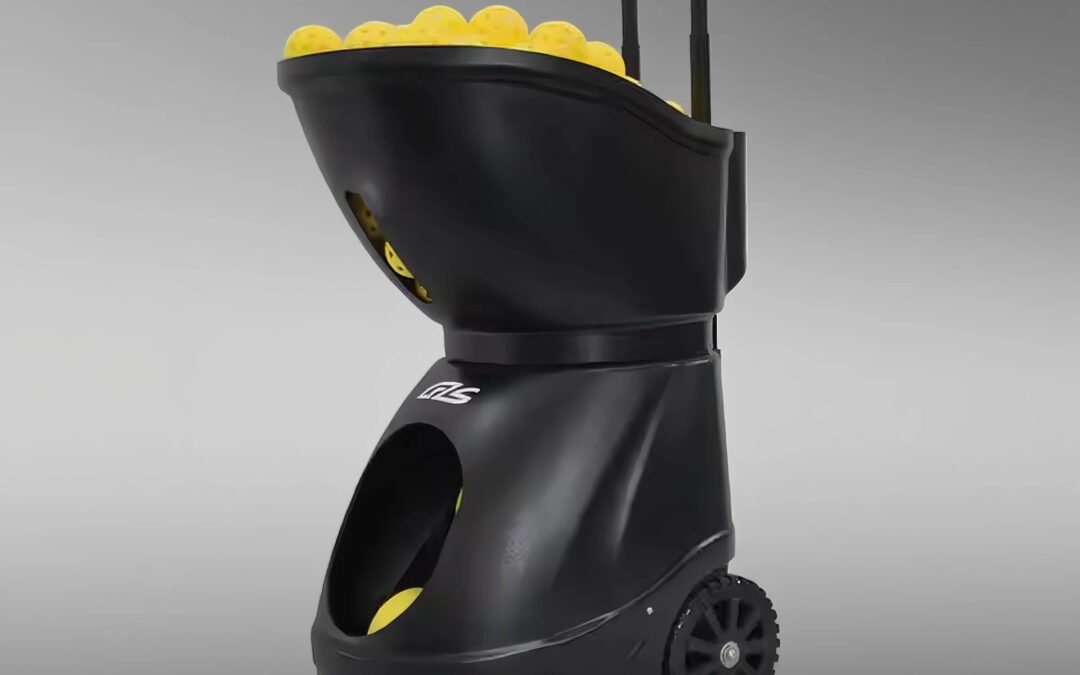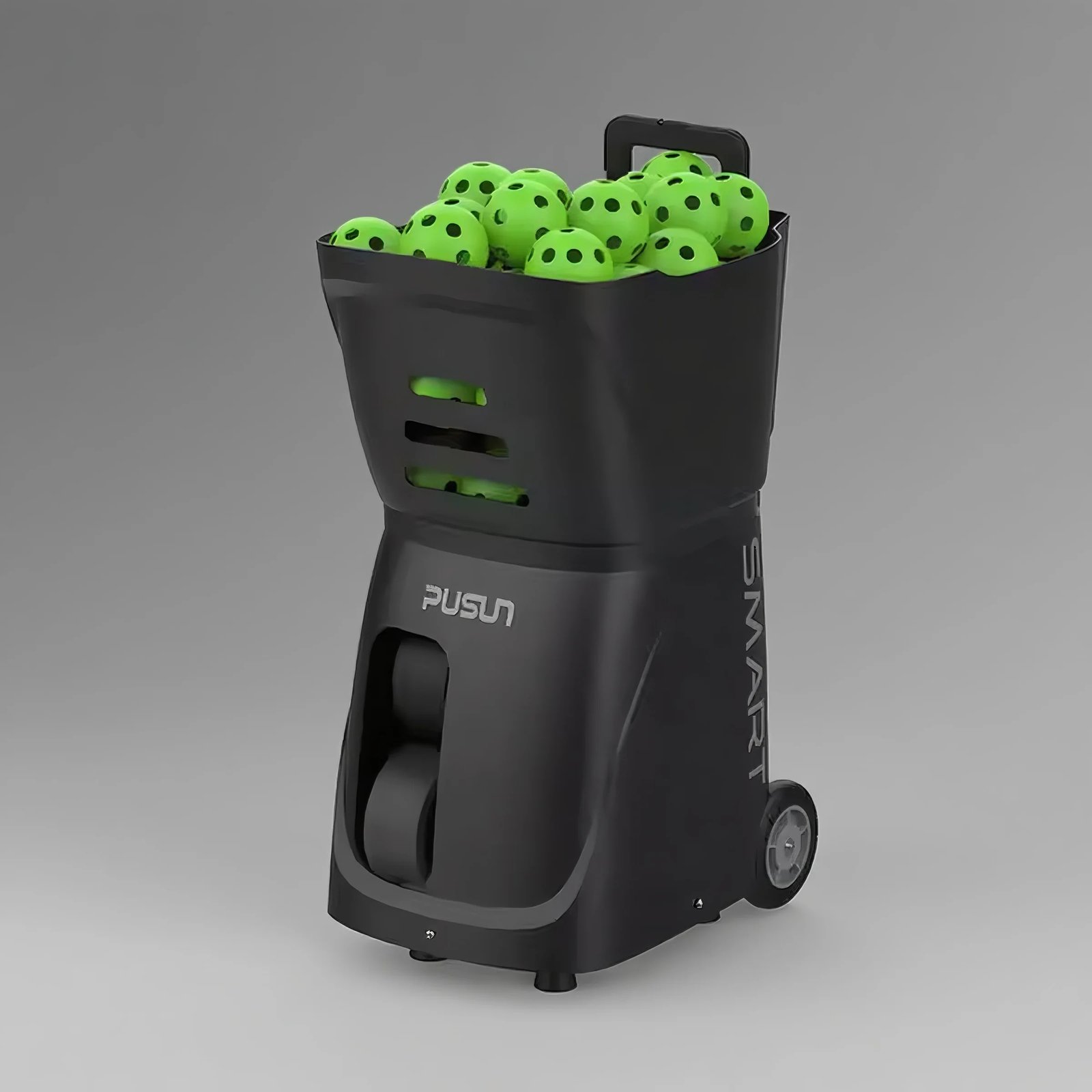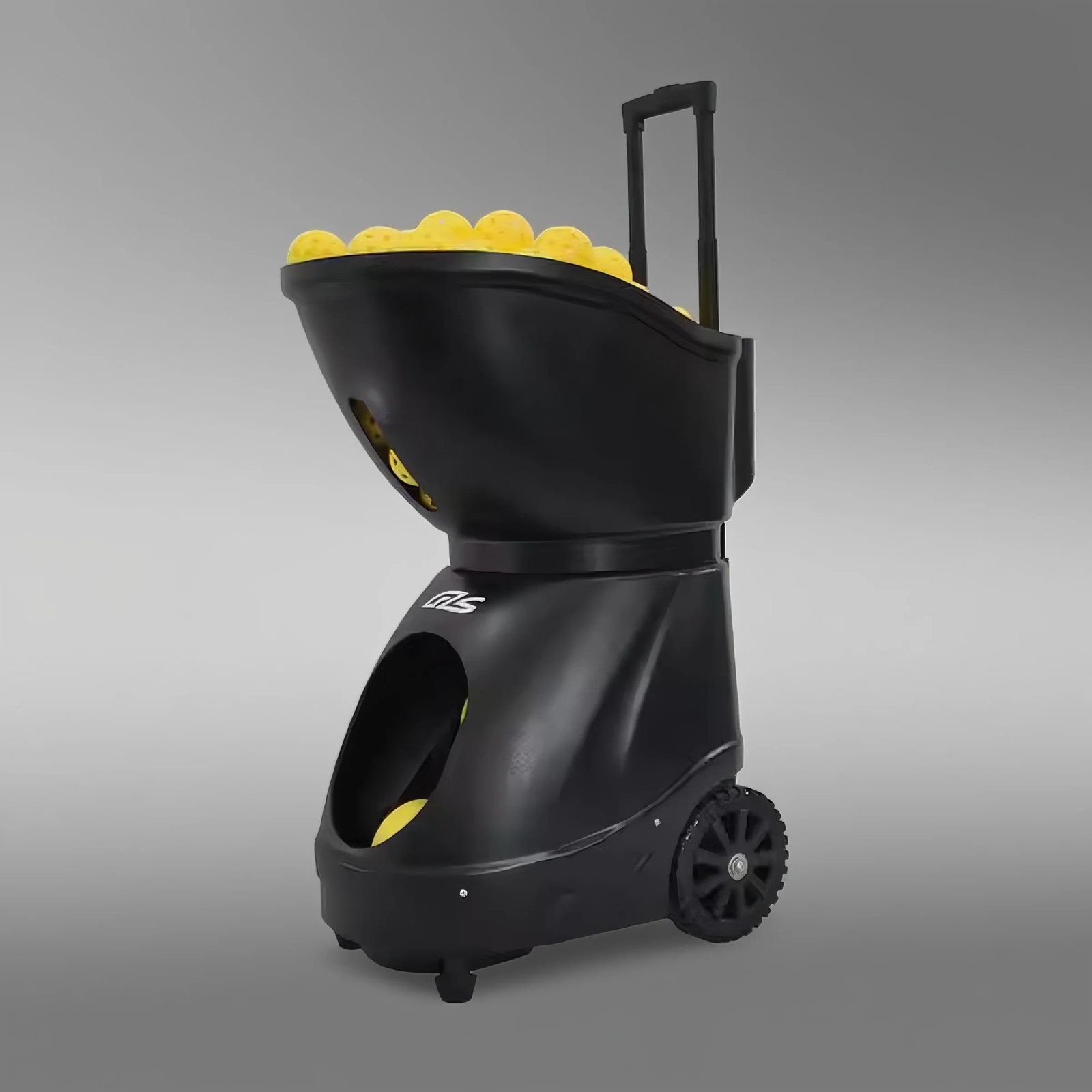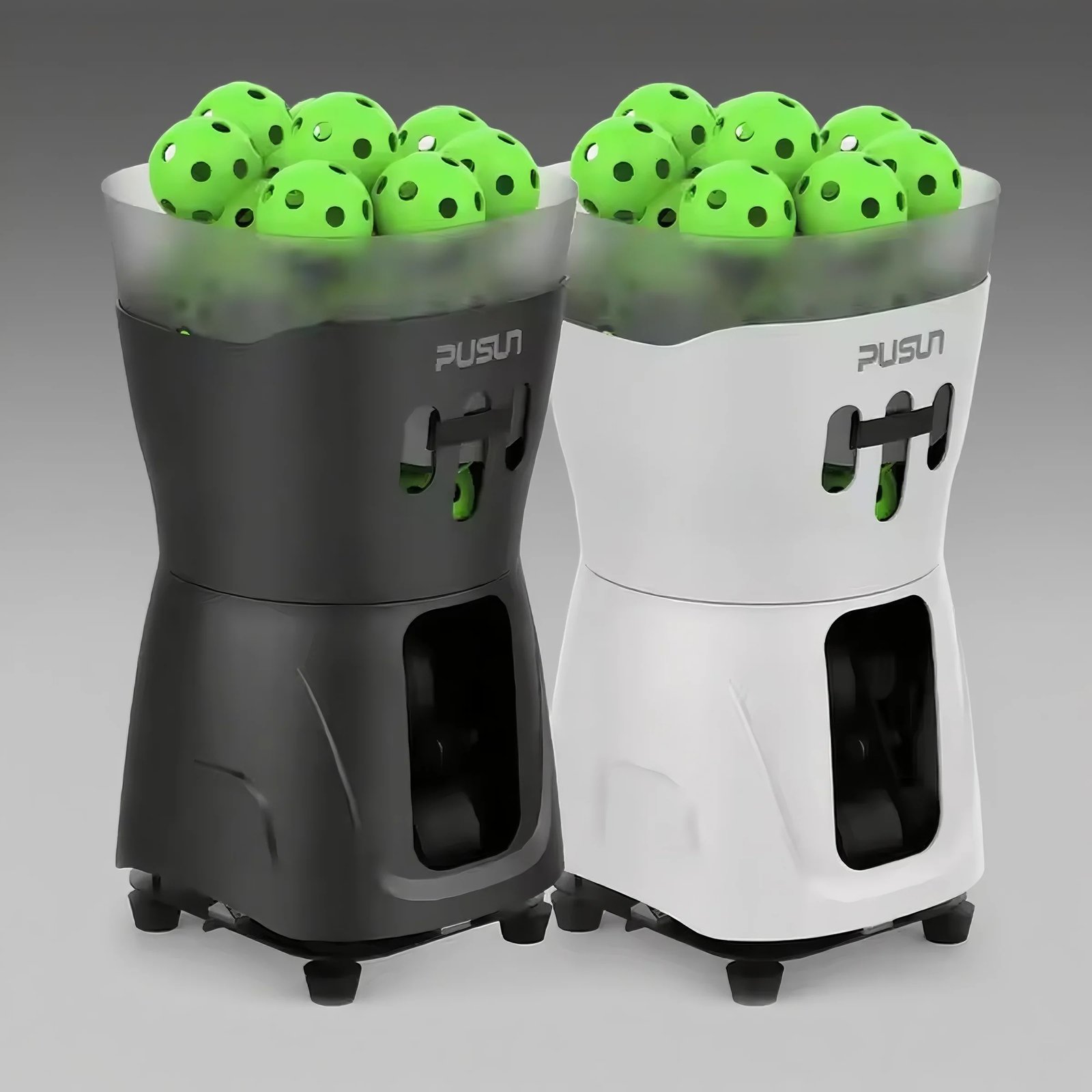So, are pickleball machines worth it? If you want to improve your game and train on your own, these machines can be a smart investment. Take a look at some real benefits players see:
Players improved lower body power by 11% in just six weeks.
Many reported less pain and better balance.
High enjoyment and strong motivation kept people practicing.
| Aspect | Pros | Cons |
|---|---|---|
| Cost | Good for serious players | High price: $250 to $3,000 |
| Usability | Easy settings, solo practice, custom drills | Some machines are heavy and less portable |
The market for pickleball machines keeps growing fast. New technology and more people playing mean you have more choices than ever.
Key Considerations
Cost is a big factor. Pickleball machines can be expensive. Some cost as much as a new bike or even more. You should ask yourself if you will use it enough to make it a good investment. If you play a lot or want to train seriously, the price might make sense. If you only play sometimes, you might not get your money’s worth.
You also need to think about space. Some machines are big and heavy. You need a place to store it and room to use it. If you have a small garage or live in an apartment, this could be a problem.
Another thing to consider is how much you like to practice alone. A pickleball machine lets you train by yourself any time you want. You don’t have to wait for a partner. But if you love playing with friends, you might not use the machine as much.
Tip: Make a list of your goals and how often you plan to practice. This can help you decide if a machine fits your needs.
Who Benefits Most
You might wonder, are pickleball machines worth it for everyone? The answer is no. Some people get more out of them than others. Here’s who usually benefits the most:
*Players who want to improve quickly and practice often.
*People who like to train alone or have trouble finding partners.
*Athletes who want to work on specific skills, like footwork or shot accuracy.
*Coaches who need a tool for teaching groups or running drills.
Your age, fitness level, and even your height can make a difference. For example, taller players might need different drills than shorter players. If you have a lot of energy and want to build muscle memory, a machine can help you repeat the same shot over and over. If you are coming back from an injury, you can use the machine to control the pace and avoid getting hurt again.
Some research shows that using automated training systems works best when you match the drills to your own needs. Your role on the court, your fitness, and even where you play (indoors or outdoors) can change how much you benefit. Coaches and experts often use data about players’ performance and injury risk to set up the best training plans. This means that if you know your own strengths and weaknesses, you can get more out of a pickleball machine.
*Players with clear goals and a plan for practice see the most improvement.
*People who track their progress and adjust their training get better results.
*If you enjoy learning and want to push yourself, you will likely find a machine worth the investment.
So, are pickleball machines worth it? If you fit into these groups and want to take your game to the next level, the answer is probably yes. If you just play for fun or don’t like solo practice, you might want to save your money.
Advantages
Solo Practice
You can practice pickleball anytime, even if you do not have a partner. A machine lets you train alone and focus on your own skills. Many portable machines weigh only 20-40 pounds, so you can move them easily. Some models run up to 8 hours on a single charge, which means you get long, uninterrupted sessions. You do not have to reload balls often, either. For example, the PP smart pro pickleball machine holds up to 100 balls. That means more time hitting and less time picking up.
| Feature / Metric | Value / Statistic | Advantage |
|---|---|---|
| Ball Delivery Speed Range | 20-120km/h | Practice at your own pace |
| Battery Life (Portable Models) | Up to 8 hours | Long solo sessions |
| Ball Capacity (pp smart pro Machine) | Up to 90 balls | Fewer reloads |
| Skill Retention Improvement | ~40% | Better memory for shots |
| User Satisfaction Rate | ~95% | Most users love solo practice |
Tip: If you want to get better fast, solo practice with a machine can help you repeat shots and build confidence.
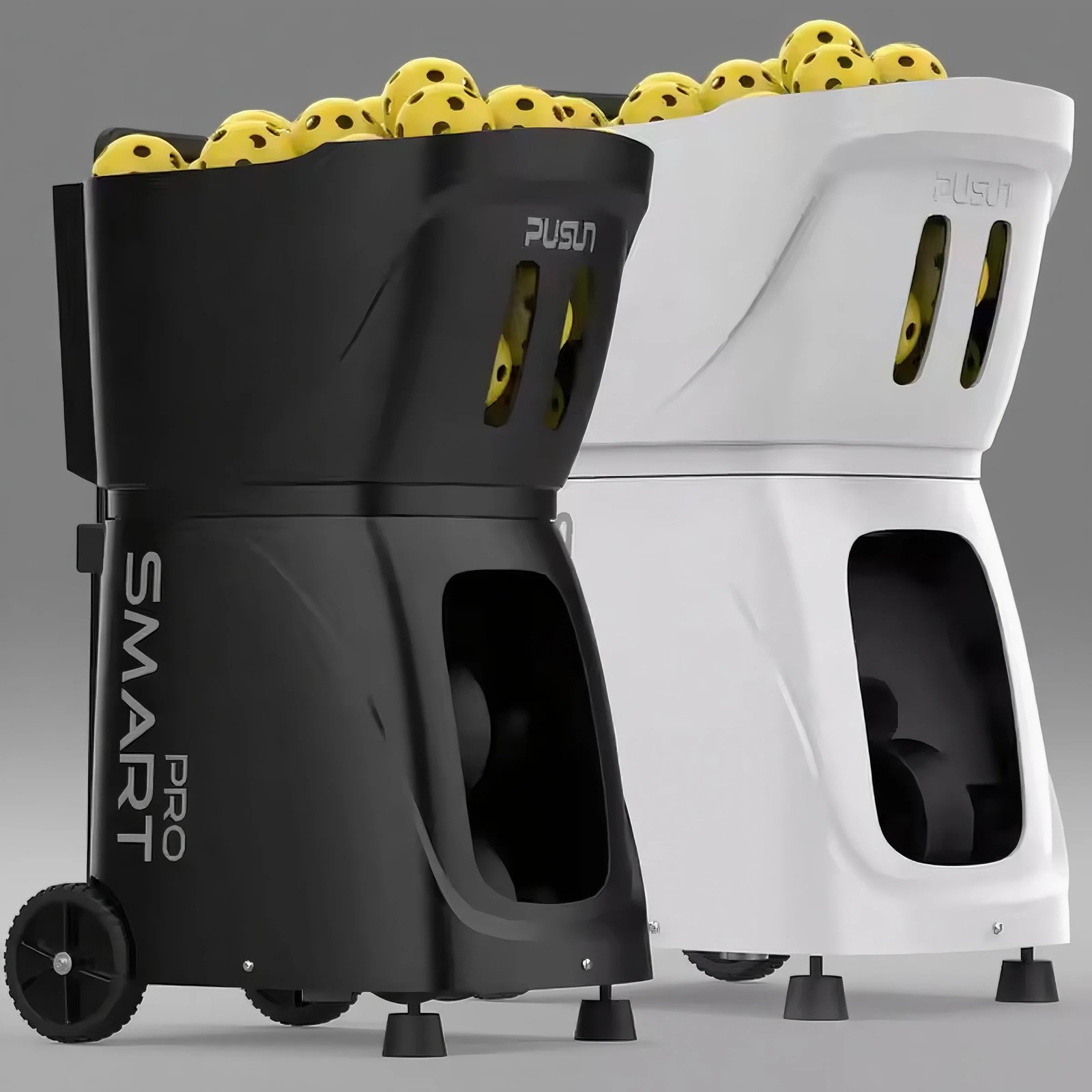
Customizable Drills
Pickleball machines let you set up drills that match your skill level. You can program drills for volleys, groundstrokes, spin shots, or even footwork. Many machines connect to apps, so you can track your progress and see where you need to improve. For example, you might set a cross-court drill to boost your shot accuracy by 5% each session. You can also work on quick reflex volleys, aiming for an 80% success rate.
Program drills for specific skills like serve accuracy or reaction time.
Track your stats and see real progress after each session.
Adjust speed, spin, and direction to keep practice challenging.
Consistency and Muscle Memory
Efficient Training
Injury Prevention
Disadvantages
Cost
Setup and Storage
You need space to store your machine. Some models are heavy or bulky, which can make moving them tricky. Take a look at how different machines compare:
| Machine Name | Weight (lbs) | Portability & Storage Features | Setup Notes & Challenges | User Feedback on Setup/Storage Challenges |
|---|---|---|---|---|
| Spinshot Player | 30 | Lightweight, compact, fits well in car for transport | Easy to transport and store | Implied minimal challenges due to portability |
| Furlihong 680PBH Starter Kit | N/A | Includes carrying bag, all-in-one design | Simplifies setup and storage | Weight might be cumbersome for some users |
| Pickleball Tutor Mini | 20-29 | Can be stored in various car locations; trunk short-term | No assembly except extension cord for AC models | Easy operation; some caution advised for trunk storage |
Battery and Capacity
Ball Consistency
Pickleball machines deliver balls in a steady, repeatable way. This helps you practice, but it does not feel like a real game. Even with smart features and random shot patterns, machines cannot match the unpredictable shots you get from a human partner. You might get good at hitting the same shot, but you could struggle when you face real opponents who mix things up.
Lack of Human Interaction
Repetitiveness
Note: Think about how much you value real-game play and social time before buying a machine. It is not just about skill—fun matters too!
Buying Guide
Features to Consider
When you shop for a pickleball machine, you want to look at the features that matter most to your practice. Some machines let you adjust the speed, spin, and direction of the ball. Others offer remote controls or pre-programmed drills. You might also want a machine that can feed balls at different intervals or change elevation for lobs and dinks. Here are some features players and experts mention most:
*Ball capacity
*Adjustable speed and spin
*Oscillation (side-to-side movement)
*Remote control options
*Battery life and power choices
*Portability (wheels and handles)
*Warranty coverage
Tip: Make a list of your must-have features before you buy. This helps you focus on what will really help your game.
| Feature | Why It Matters |
|---|---|
| Ball Capacity | More balls mean less time picking up |
| Adjustable Speed | Practice at your own pace |
| Spin Ability | Get ready for real-game shots |
| Oscillation | Practice moving and reacting |
| Remote Control | Change settings without stopping |
| Portability | Easy to move and store |
| Warranty | Peace of mind if something breaks |
Price and Budget
Pickleball machines come in many price ranges. You can find basic models for around $950, while top machines cost over $2,000. The price often matches the features and build quality. If you play often or want advanced drills, you might want to spend more. If you are just starting, a budget model could be enough.
| Price Range | Example Models | Features |
|---|---|---|
| Budget (~$949) | lixisports Pickleball Machine | Basic, good for beginners |
| Mid-Range ($1,500-$1,900) | Sports Tutor, ERNE | More drills, longer battery, oscillation |
| Premium ($2,100-$2,700) | Titan, Spinshot, Simon X | Pro features, app control, big battery |
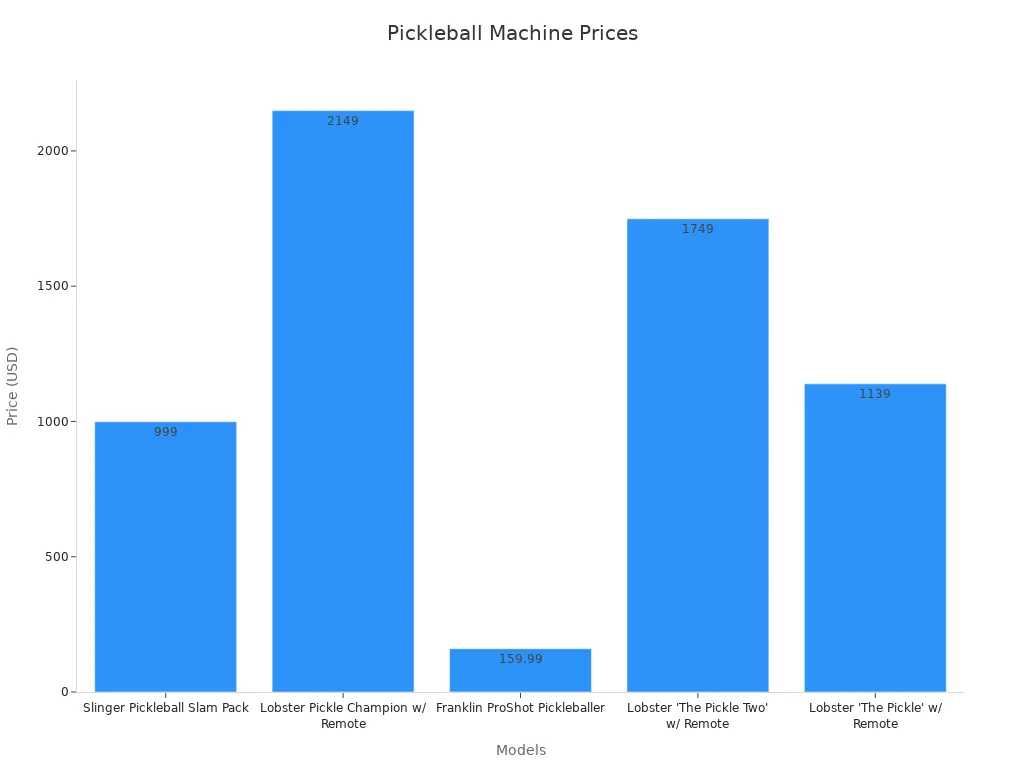
Portability
Ease of Use
Note: Some machines have a learning curve, but most users get comfortable after a few sessions.
Support and Warranty
| Model Name | Warranty Period |
|---|---|
| Pickleball Tutor Plus | 3 years / 1 year |
| The Pickle by Lobster | 2 years / 6 months |
| Pickleball Tutor Mini | 3 years / 1 year |
If you pick a machine with the right features, price, and support, you will get more value and enjoy your practice even more.
You’ve seen both sides—pickleball machines offer solo practice, customizable drills, and real skill gains, but they come with a high price and storage needs.
| Feature | Advantage | Drawback |
|---|---|---|
| Solo Practice | ✅ Anytime training | ❌ Less social interaction |
| Custom Drills | ✅ Tailored improvement | ❌ Can get repetitive |
| Cost | ✅ Worth it for serious players | ❌ Expensive for casual use |
The market keeps growing, with new tech and more players joining every year.
Ask yourself: are pickleball machines worth it for your goals and budget?
If you want to improve fast and love solo practice, a machine could be your best training partner.
FAQ
How long does it take to see improvement with a pickleball machine?
Can kids use pickleball machines safely?
Do I need special balls for my pickleball machine?
What if my machine breaks or stops working?

I am leo lee, a passionate pickleball player with more than 10 years playing experience, I am the owner of lixisports and helped more than 50+ pickleball orgnanizations to grow their business.

